Underground archives of the Warsaw Ghetto : Ringelblum Archives Konspiracyjne archiwum getta Warszawskiego : Archiwum Ringelbluma
Contains some 25,000 pages of more than 6,000 documents relating to the lives of the Jewish population living within the borders of occupied Poland from September 1939 to the end of February 1943. The collection contains questionnaires, reports, journals, diaries, memoirs, journal articles, literary works, letters, notices, copies of official correspondence, protocols of the deliberations of ghetto institutions, identity cards, postal notices, advertisements, medical prescriptions, business stationery, wrapping paper used in the ghetto, outlines of scholarly and artistic works, school and university diplomas, and photographs. The Clandestine Archives of the Warsaw Ghetto is also a collection of conspiratorial materials, among them underground press materials, leaflets, and notes of radio monitoring. The materials in the clandestine archives form thematic and chronological cycles. The first part describes the result of the destructive actions of the Nazis, challenges to the professional and social life of the Jewish population, as well as changes in its moral and cultural manners, and the first efforts at resistance. The second part of the collection illustrates the annihilation of the Jewish population in occupied Poland as well as the preparation of weapons for armed confrontation by the resistance. The Clandestine Archives of the Warsaw Ghetto is diverse in form and provenance. It contains typed, handwritten, printed materials, and copies. The texts are written on pieces of waste paper, for example on the reverse of documents, wine labels, etc. Part I of the Archives of the Warsaw Ghetto contain documents from the period of July 22 to August 1942, and pictures by the artist-painter G. Seksztajn—pictures created before the war. Part II contains documents from July 22, 1942, to the end of February 1943. The second part also includes personal archives and depositions of the “Oneg Shabbat” members. Thematically, those materials belong to Part I and are connected with the prewar period. Copyright Holder: Żydowski Instytut Historyczny im. Emanuela Ringelbluma Emanuel Ringelblum was born on Nov. 21, 1900, in Buczacz, Eastern Galicia (now Buchach, Ukraine). He spent his childhood and school years in Nowy Sacz, Poland, and studied at Uniwersytet Warszawski (Warsaw University) where he obtained a doctorate of philosophy. He was a historian, educator, social activist, and journalist. He initiated and was one of the founders of the Jewish Historical Society. Ringelblum remained in Warsaw until his death in Pawiak prison in March 1944. In May 1940 in Warsaw, Poland, at the urging of Emanuel Ringelblum, an archival and documentation center was formed under the cryptonym "Oneg Shabbat" / "Oneg Shabbath," ("The Sabbath Joy" or "Saturday Meetings"). The reports from this archive for the authorities of the Polish Underground carried the signature ARG (Archiwum Getta = The Ghetto Archives). Ringelblum used those two names interchangeably. The seed for the underground archives were the "Notes," chronicles of events written by Ringelblum from Sept. 1939. On the basis of that documentation, a great history of Polish Jews during World War II was to be written. Ringelblum's closest collaborators in "Oneg Shabbath" included Menachem Linder, young scholar of the Department of Economy and Statistics at the Yidisher Visnshaftlekher Institut (now YIVO Institute for Jewish Research); Eliau Gutowski, educator and journalist; Hersz Wasser, economist; Menachem Kohn, social activist; Rabbi Szymon Huberband, historian; Izrael Lichtensztajn, teacher; Eliezer Auerbach, Aram Lewin, Perec Opoczynski, Cecylia Slapakowa, Henryka Lazowertowna, Gustawa Jarecka, and others. Many people, especially those connected to the underground, cooperated with the ARG. The “Oneg Shabbath" group fulfilled a great historical mission warning the world about the fate of regional Polish Ghettos. The Ringelblum team acted as an informal information center about Nazi genocide. In July 1942, days before the liquidation of the ghetto, a meeting of the ARG leadership concerning the security of the archives took place. A plan for action was formed on Aug. 3. The documents were placed in 10 metal boxes, 50 x 50 x 15 cm. and hidden in a special shelter in the basement of a house at 68 Nowolipki Street. The teacher, Izrael Lichtensztajn, with the help of two students supervised the task. At the end of 1943, the second part of the material was secured in two metal milk containers and added to the hiding place at 68 Nowolipki Street. The hiding place was cemented shut. On the last night before the Warsaw ghetto uprising, Marek Edelman hid the third part of the materials at 34 Swietojarska Street where the ZOB (Jewish Armed Fighting Organization) bunker was located. Of the scores of people working together on “Oneg Shabbath" only two survived: Rachela Auerbach (died in Israel in 1976) and Hersz Wasser (died in Israel 1981). After the liberation of Warsaw, a search was conducted, according to the instructions of Hersz Wasser. On 18 Sept. 1946, the first part of the Archives was found in the ruins of the house at Nowolipki68. On 1 Dec. 1950, at the same location the second part was found. Of the third part of the Archives, Hersz Wasser found only a bundle of Szmuel Winter's worn-out diaries; the rest was lost irretrievably. The original documents, Part I and Part II, are housed in the Archives of the Żydowski Instytut Historyczny (Jewish Historical Institute) in Poland. In June 1999, the Director General of UNESCO decided to add the Underground Archives of the Warsaw Ghetto collection to the “Memory of the World" Register.
- EHRI
- Archief
- us-005578-irn507312
- Bloch, Eliezer Lipe, 1889-1943?
- World War, 1939-1945--Poland--Social conditions.
- Personal narratives.
Bij bronnen vindt u soms teksten met termen die we tegenwoordig niet meer zouden gebruiken, omdat ze als kwetsend of uitsluitend worden ervaren.Lees meer





